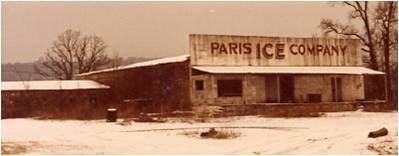By Dr. Curtis Varnell
There is nothing like sitting on the porch on a hot, sunny summer day with a chilled glass of good Arkansas sweet tea, something we take for granted today. Not many years ago, obtaining a refreshing, cold drink was something reserved for special occasions. Until the early 1900s, the only ice available was natural ice that was shipped from the frozen North at great expense.
In the early 1900s, Americans found they could manufacture ice using compressed gasses and refrigeration. Nearly every town built one of the new factories created to supply this delicacy. In 1888, Dardanelle became the first town in the state to have an ice plant. By 1920, 4,800 of them existed in the U.S. and towns throughout the River Valley had plants that supplied ice.
The huge plants took the local water supply, froze it into 300-pound blocks measuring four foot long, two foot wide, and one foot thick. Employees used tongs to hoist these huge blocks of ice onto wagons which delivered the ice to local businesses and homes.
Ice companies supplied local customers with a four-sided triangle with numbers the size of the block of ice needed; 25, 50, 75, or 100 pounds. Customers placed the sign with the amount needed on the upper side and the iceman would cut off the desired amount of ice and leave it in the icebox. These iceboxes were zinc-lined, insulated boxes that would preserve the ice for a length of time. They usually had a pan in the bottom to collect the water as the ice melted. Stores had ice boxes in which they placed delicious R.C., Dr. Pepper, and Coca-Cola bottles so they were icy cold when one had a nickel available to purchase one.
Most rural stores had a large icebox located beside the store. The merchants would purchase hundreds of pounds of ice and locals would visit the stores and purchase the amount needed to keep their food cool in the “iceboxes.”
Ice was considered a delicacy. In the summertime, children would run behind the deliveryman begging for a sliver of ice, the only cool thing available because there was no air conditioning.
By the 1930s, refrigerators that produced ice were available for areas served by electricity but the “ice plants” still served rural areas. I can still remember purchasing ice in the 1960s from Woodard Mosely of Midway. He would open up the huge ice building on a hot day and a chill breeze would roll out the door. Taking his pick, he would hack off a big chunk of the crystal clear ice, small pieces flying in every direction. Wrapping the ice in heavy cloth, we dumped it into our chest and headed to Aunt Sade’s home for a special night. All my Moore relatives were in from up north. They all sang and were skilled musicians. Family sat on the front porch rocking as night fell. Lightning bugs lit the night and the air was filled with the sweet sounds of the guitar, mandolin, and fiddle. The ice we bought that day was salted and dropped around the container containing the sweet mixture when my Uncle Danny and I got through turning the churn.
Ice plants are a thing of the past. Some have been torn down, several have become local restaurants, and a few preserved as historical sites. Now, I get my ice from the refrigerator and have sweet memories of cool people, cool times, and the cool history of our ice plants.







